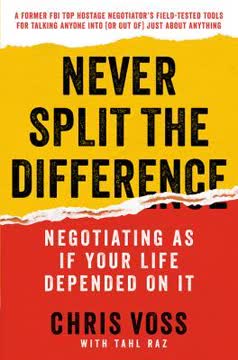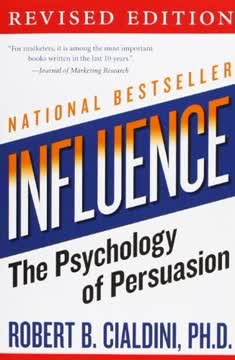Key Takeaways
1. Embrace failure as a crucial step towards creativity and innovation
"Failure isn't a necessary evil. In fact, it isn't evil at all. It is a necessary consequence of doing something new."
Redefine failure. Rather than viewing failure as a setback, see it as an opportunity for growth and learning. Pixar's approach to creativity involves embracing mistakes and learning from them. This mindset shift allows teams to take risks, experiment, and push boundaries without fear of repercussions.
Create a safe environment. Foster a workplace culture where employees feel comfortable taking risks and sharing ideas, even if they might fail. This encourages innovation and creativity. Implement systems that allow for rapid prototyping and iteration, enabling teams to fail fast, learn quickly, and improve continuously.
- Encourage "plussing": Building on ideas rather than shooting them down
- Celebrate failures that lead to valuable insights
- Share stories of past failures that led to successful outcomes
- Implement post-mortems to analyze both successes and failures
2. Foster a culture of candor and open communication
"If there is more truth in the hallways than in meetings, you have a problem."
Promote honest feedback. Create an environment where team members feel safe to express their opinions, concerns, and ideas openly. This transparency leads to better decision-making and problem-solving. Encourage constructive criticism and make it a norm to challenge ideas respectfully.
Implement effective communication structures. Establish regular forums for open dialogue, such as daily stand-ups, weekly team meetings, or monthly town halls. Ensure that communication flows both up and down the organizational hierarchy. Leaders should model candor by being transparent about company challenges and decisions.
- Use anonymous feedback systems to encourage honesty
- Train employees in giving and receiving constructive feedback
- Create cross-functional teams to break down silos and encourage diverse perspectives
- Implement a "no-idea-is-too-crazy" brainstorming policy
3. Hire for potential, not just experience
"If you give a good idea to a mediocre team, they will screw it up. If you give a mediocre idea to a brilliant team, they will either fix it or come up with something better."
Prioritize talent and attitude. When building teams, focus on hiring individuals with potential, passion, and the right mindset rather than solely on their experience or technical skills. Look for candidates who demonstrate creativity, adaptability, and a willingness to learn and grow.
Develop a robust talent pipeline. Invest in training and mentorship programs to nurture and develop talent within the organization. Create opportunities for employees to take on new challenges and responsibilities, allowing them to grow and showcase their potential.
- Implement diverse hiring practices to bring in fresh perspectives
- Use project-based assessments during the hiring process to evaluate problem-solving skills
- Offer internships and apprenticeships to identify and nurture young talent
- Encourage internal mobility to retain and develop existing talent
4. Protect the new and guard against the natural tendency to fear change
"The cost of preventing errors is often far greater than the cost of fixing them."
Embrace experimentation. Encourage teams to try new approaches and technologies, even if they seem risky or unconventional. Create a culture that values innovation and is willing to challenge the status quo. Allocate resources and time for experimental projects that may not have immediate payoffs.
Manage change effectively. Recognize that change can be uncomfortable and that people naturally resist it. Develop strategies to help your team navigate transitions smoothly. Communicate the reasons behind changes clearly and involve employees in the process to gain buy-in.
- Implement a "sandbox" program for testing new ideas
- Celebrate and reward innovative thinking, even if it doesn't lead to immediate success
- Provide training and support to help employees adapt to new technologies or processes
- Use change management techniques to guide teams through major transitions
5. Balance art and commerce without compromising quality
"Quality is the best business plan."
Prioritize excellence. Make a commitment to producing high-quality work, even if it means taking more time or investing more resources. Understand that quality products are more likely to succeed in the long run and build a strong reputation for your brand.
Find creative solutions to business challenges. Instead of compromising artistic integrity for commercial gain, look for innovative ways to meet both creative and business objectives. Encourage collaboration between creative and business teams to find mutually beneficial solutions.
- Implement rigorous quality control processes
- Invest in research and development to stay ahead of market trends
- Create cross-functional teams that include both creative and business-minded individuals
- Educate all team members on the importance of balancing artistic vision with commercial viability
6. Remove barriers to creativity and empower your team
"Give a good idea to a mediocre team, and they will screw it up. Give a mediocre idea to a great team, and they will either fix it or come up with something better."
Identify and eliminate obstacles. Regularly assess your organization for processes, policies, or structures that hinder creativity and innovation. Work to streamline workflows and remove unnecessary bureaucracy that can stifle new ideas.
Empower decision-making. Trust your team to make decisions and take ownership of their work. Provide them with the resources, authority, and support they need to execute their ideas effectively. Encourage calculated risk-taking and back your team even when outcomes are uncertain.
- Implement a flat organizational structure to reduce hierarchical barriers
- Create dedicated time for creative pursuits, like Google's "20% time"
- Provide access to tools and technologies that facilitate innovation
- Establish clear guidelines for decision-making autonomy at different levels
7. Constantly challenge and reassess your assumptions
"The future is not a destination - it is a direction."
Cultivate curiosity. Encourage a culture of continuous learning and questioning. Regularly challenge established processes, beliefs, and strategies to ensure they remain relevant and effective. Foster an environment where asking "why" is encouraged and valued.
Implement regular reviews. Set up systems to periodically reassess your company's direction, strategies, and processes. Be willing to pivot or make significant changes when evidence suggests a need for adjustment. Use data and feedback to inform decision-making and challenge preconceived notions.
- Conduct regular "assumption audits" to identify and test underlying beliefs
- Encourage diverse perspectives by involving team members from different departments in strategic discussions
- Use scenario planning to prepare for various possible futures
- Implement a system for collecting and acting on customer and employee feedback
8. Leaders should focus on creating an environment where great ideas can emerge
"Getting the right people and the right chemistry is more important than getting the right idea."
Foster creativity. Create a work environment that stimulates creativity and innovation. This includes physical spaces designed for collaboration, as well as cultural norms that encourage idea-sharing and experimentation. Leaders should focus on removing obstacles and providing resources rather than dictating solutions.
Lead by example. Demonstrate the behaviors and attitudes you want to see in your team. Show vulnerability, admit mistakes, and actively participate in creative processes. Create an atmosphere where everyone feels their contributions are valued and where hierarchy doesn't stifle good ideas.
- Design office spaces that facilitate both collaboration and focused work
- Implement regular brainstorming sessions or hackathons
- Provide resources for personal development and creative pursuits
- Recognize and reward innovative thinking, regardless of where it comes from in the organization
9. Embrace uncertainty and adapt to unforeseen challenges
"The unpredictable is the ground on which creativity depends."
Develop adaptability. In a rapidly changing world, the ability to pivot and adapt is crucial. Encourage flexibility in thinking and processes, and teach teams to view unexpected challenges as opportunities for innovation rather than obstacles.
Plan for uncertainty. While it's impossible to predict every challenge, you can prepare your organization to respond effectively to change. Develop contingency plans, create agile workflows, and build a culture that thrives on problem-solving and quick adaptation.
- Conduct regular scenario planning exercises
- Create cross-functional "rapid response" teams to address unexpected challenges
- Implement agile methodologies across the organization, not just in software development
- Encourage a growth mindset that views challenges as opportunities for learning and improvement
10. Prioritize people over ideas and nurture talent for long-term success
"If you give a good idea to a mediocre team, they will screw it up. If you give a mediocre idea to a brilliant team, they will either fix it or come up with something better."
Invest in people. Recognize that your team is your most valuable asset. Prioritize hiring, developing, and retaining top talent. Create an environment where employees feel valued, challenged, and supported in their growth.
Foster a learning culture. Encourage continuous learning and skill development. Provide opportunities for employees to expand their knowledge and capabilities, both within their specific roles and in broader areas that interest them. This not only improves individual performance but also contributes to the overall innovation capacity of the organization.
- Implement mentorship programs to support employee growth
- Offer regular training and development opportunities
- Create individual development plans for each employee
- Encourage job rotations or temporary assignments to broaden skills and perspectives
- Recognize and reward not just results, but also effort, learning, and personal growth
Last updated:
FAQ
What's Creativity, Inc. about?
- Creative Culture Focus: Creativity, Inc. by Ed Catmull explores building and sustaining a creative culture within organizations, using Pixar Animation Studios as a primary example.
- Pixar's Journey: The book shares insights from Catmull's experiences at Pixar, detailing how the company overcame obstacles and maintained its innovative spirit.
- Management Philosophy: It delves into management philosophies that support creativity, such as embracing failure, encouraging candor, and protecting new ideas.
Why should I read Creativity, Inc.?
- Invaluable Insights: The book offers insights into the creative process and effective management, making it essential for anyone in a creative field.
- Leadership Inspiration: Leaders and managers can find inspiration in Catmull’s approach to fostering a culture of creativity and innovation.
- Understanding Creativity: It deepens understanding of cultivating creativity in teams, emphasizing trust, collaboration, and open communication.
What are the key takeaways of Creativity, Inc.?
- Embrace Failure: Failure is an essential part of the creative process and should be seen as an opportunity for growth.
- Foster Candor: Honest feedback is crucial for improving creative work, as highlighted by Pixar's Braintrust meetings.
- Protect New Ideas: New ideas need protection, especially in their early stages, to ensure they can develop and flourish.
What is the Braintrust method in Creativity, Inc.?
- Feedback Mechanism: The Braintrust is a group of experienced filmmakers at Pixar who provide candid feedback on films in progress.
- Open Dialogue: It encourages open dialogue, allowing for honest discussions about what is working and what isn’t.
- Problem-Solving Focus: The goal is to identify and solve storytelling problems, minimizing defensiveness and promoting collaboration.
How does Creativity, Inc. define the relationship between creativity and management?
- Creativity Needs Structure: Creativity thrives within a structured environment that allows for freedom and exploration.
- Balance Control and Freedom: Managers should balance control and freedom, avoiding micromanagement while keeping projects on track.
- Trust and Empowerment: Trust is central; empowering employees and trusting them to make decisions fosters innovation and productivity.
What role does failure play in the creative process according to Creativity, Inc.?
- Essential for Growth: Failure is essential for growth and innovation, providing valuable lessons for future efforts.
- Cultural Acceptance: Creating a culture that accepts failure allows teams to take risks without fear of repercussions.
- Learning Opportunity: Each failure should be viewed as a learning opportunity, encouraging analysis and improvement.
How does Creativity, Inc. address the concept of randomness?
- Embrace Randomness: Randomness is an inherent part of the creative process and should be embraced rather than feared.
- Learning from Surprises: Being open to surprises can lead to unexpected discoveries and innovations.
- Creativity and Exploration: Encouraging exploration allows randomness to lead to new ideas and directions.
What are the best quotes from Creativity, Inc. and what do they mean?
- “The best managers acknowledge...”: This quote emphasizes humility in leadership, recognizing limitations fosters a culture of learning.
- “Quality is the best business plan.”: Prioritizing quality in creative work leads to long-term success, reflecting Pixar’s commitment to excellence.
- “The new needs friends.”: Supporting new ideas is crucial for fostering creativity and preventing them from being stifled.
How does Ed Catmull suggest leaders should handle criticism in Creativity, Inc.?
- Embrace Feedback: Feedback should be embraced as a tool for improvement, addressing the root causes of fear in an organization.
- Create Safe Spaces: Safe spaces for expressing thoughts and concerns without fear of retribution are essential.
- Lead by Example: Leaders should model openness to criticism and a willingness to learn from mistakes.
What challenges did Pixar face during its growth, as discussed in Creativity, Inc.?
- Cultural Shifts: Growth led to cultural shifts that threatened Pixar’s core values, such as reluctance to voice differing opinions.
- Maintaining Innovation: Maintaining innovation and creativity amidst success and growth was a recurring challenge.
- Balancing Autonomy and Collaboration: Balancing autonomy with collaboration, especially after merging with Disney, was crucial.
What is the significance of Pixar University in Creativity, Inc.?
- Fostering Learning: Pixar University fosters continuous learning and skill development, encouraging exploration and creativity.
- Breaking Down Barriers: It allows employees from different departments to interact, breaking down silos and fostering community.
- Encouraging Openness: By promoting learning and growth, it supports an open culture where experimentation is valued.
How does Creativity, Inc. address the concept of change within organizations?
- Inevitability of Change: Change is a natural part of organizational growth and evolution, and embracing it is essential for success.
- Managing Fear of Change: Fear of change can hinder creativity; leaders must create a culture where change is seen as an opportunity.
- Balancing Stability and Innovation: Organizations should maintain core values while adapting to new challenges and opportunities.
Review Summary
Creativity, Inc. is highly praised for offering insights into Pixar's creative process and management philosophy. Readers appreciate Catmull's honest approach to leadership, fostering creativity, and problem-solving. The book blends Pixar's history with practical business advice, making it valuable for managers and creatives alike. Many found the anecdotes about Pixar's films and Steve Jobs particularly engaging. While some felt certain parts were repetitive or obvious, most reviewers considered it an inspiring and thought-provoking read about nurturing creativity in the workplace.
Similar Books










Download PDF
Download EPUB
.epub digital book format is ideal for reading ebooks on phones, tablets, and e-readers.




